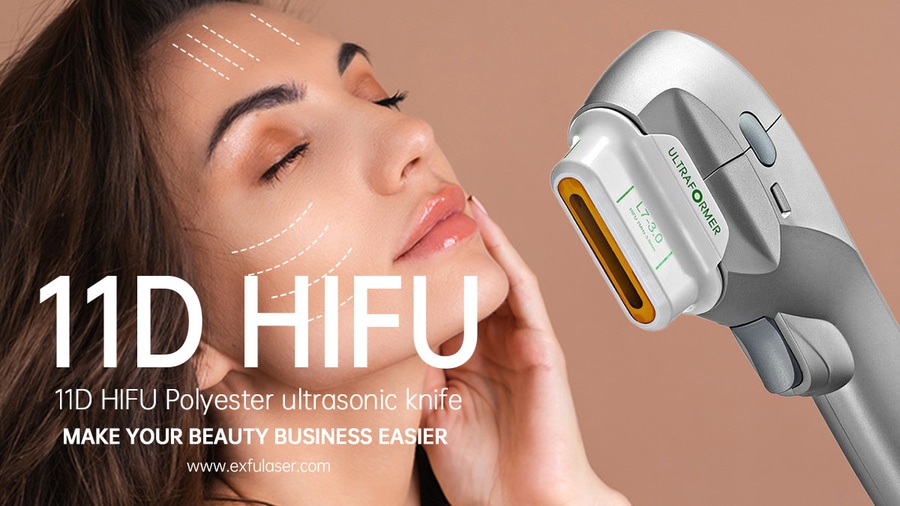Why HIFU Treatment Is the Future of Non-Surgical Facelifts
High-Intensity Focused Ultrasound (HIFU) therapy is swiftly establishing itself as a frontrunner in the world of non-surgical renovations, largely as a result of its capacity to provide targeted skin restoration without the complexities connected with traditional surgeries. By harnessing the power of ultrasound to promote collagen production, HIFU provides an appealing choice that satisfies the growing demand for efficient, minimally intrusive cosmetic remedies. As we explore the ins and outs of HIFU technology and its myriad benefits, one must think about how this cutting-edge technique can redefine aesthetic improvement for future generations.

Understanding HIFU Modern Technology
High-Intensity Focused Ultrasound (HIFU) technology has become a revolutionary non-invasive therapy choice for skin firm and lifting. This sophisticated technique uses focused ultrasound waves to permeate the layers of the skin, specifically targeting the superficial musculoaponeurotic system (SMAS) and dermis. By providing exact energy at specific midsts, HIFU stimulates the body's all-natural collagen production procedure, bring about improved skin elasticity and suppleness gradually.
The treatment is done using a handheld tool that produces ultrasound power in a regulated way, making sure minimal discomfort and downtime for patients (HIFU). Unlike typical surgical facelifts, HIFU does not call for lacerations or anesthesia, making it a safer choice with less risks and negative effects. Furthermore, the treatment is customizable, permitting experts to change specifications such as intensity and depth according to the individual patient's needs
HIFU has actually obtained popularity for its ability to provide noticeable outcomes without the demand for intrusive surgical procedure. As innovation continues to breakthrough, HIFU represents a considerable growth in visual therapies, appealing efficient end results while focusing on client safety and comfort. Its non-surgical nature makes it an enticing choice for those seeking a younger look without the associated dangers of standard facelift treatments.
Advantages of HIFU Treatment
As the need for non-invasive aesthetic procedures remains to increase, HIFU therapy attracts attention for its many advantages. High-Intensity Focused Ultrasound (HIFU) offers a distinct technique to skin tightening up and lifting, making it an enticing alternative for individuals looking for younger skin without the requirement for surgery.
One of the most significant benefits of HIFU is its capacity to stimulate collagen production, leading to improved skin flexibility and firmness gradually. This all-natural process promotes a progressive enhancement in look, making certain outcomes are both refined and enduring. Moreover, HIFU therapy is non-invasive, which suggests very little downtime and a reduced risk of problems contrasted to typical medical approaches.
People can generally resume their day-to-day tasks quickly complying with therapy, making HIFU a convenient choice for busy people. Furthermore, the procedure is adjustable, enabling practitioners to customize it to specific areas of problem, whether it be the eyebrow, jawline, or neck.
Comparison With Typical Facelifts
When thinking about choices for face rejuvenation, lots of individuals discover themselves weighing the benefits of HIFU therapy against standard facelifts. Standard facelifts include procedures that reposition underlying cells and get rid of excess skin, causing a lot more remarkable and prompt results. Nevertheless, this approach calls for considerable downtime, potential problems, and an extensive recovery duration.

The long life of outcomes differs; standard renovations can last for numerous years, whereas HIFU outcomes might require upkeep treatments every 6 to 12 months. Eventually, the option between HIFU and typical facelifts pivots on specific preferences, check over here desired results, and willingness to undertake medical treatments.
Ideal Candidates for HIFU
HIFU treatment is an excellent choice for individuals that are not ready to commit to intrusive procedures however still seek effective facial restoration - HIFU. Ideal prospects usually consist of those experiencing moderate to moderate skin laxity and aging signs such as great lines, creases, and drooping skin, specifically in the face, neck, and décolletage locations
Individuals in their late 30s to mid-60s typically locate HIFU particularly helpful, as this age variety frequently experiences the start of skin sagging and loss of flexibility. Furthermore, those seeking a non-invasive alternative to medical renovations may value the very little downtime related to HIFU, making it an appealing selection for active experts.
In addition, candidates need to be in generally healthiness and have realistic assumptions pertaining to the outcomes. It is essential for people with particular skin conditions, infections, or those who are pregnant to seek advice from a qualified practitioner prior to waging HIFU treatment. HIFU. Inevitably, a thorough consultation can help figure out if HIFU is the best suitable for a person's specific skin worries and aesthetic goals, guaranteeing optimal results and contentment
What to Anticipate During Treatment
Anticipation often goes along with the possibility of undertaking HIFU therapy, as individuals prepare to experience a non-invasive approach check that to face rejuvenation. Upon arrival, individuals will normally undergo an examination to discuss their visual goals and assess their skin problem. This tailored evaluation permits the practitioner to customize the treatment to Your Domain Name each person's requirements.
The treatment starts with the application of a gel to the targeted areas, which aids in the transmission of ultrasound power. Clients may experience an experience of warmth or mild prickling as the ultrasound waves permeate the skin layers, boosting collagen manufacturing without damaging the surface area. The period of the treatment typically ranges from 30 to 90 minutes, depending on the areas being treated.
Outcomes normally become a lot more apparent over the following weeks as collagen proceeds to develop, leading to stronger, lifted skin. Generally, HIFU provides a promising choice for those seeking effective facial restoration without invasive procedures.
Conclusion
To conclude, HIFU treatment stands for a substantial innovation in non-surgical facelift alternatives, providing an ingenious method to skin restoration that prioritizes safety and security and efficiency. Its ability to stimulate collagen manufacturing while decreasing downtime identifies it from standard surgical approaches. As individuals progressively seek non-invasive choices, HIFU's personalized nature and reduced complication dangers strengthen its placement as a leading choice in the cosmetic market, leading the way for a future where non-surgical enhancements become the norm.